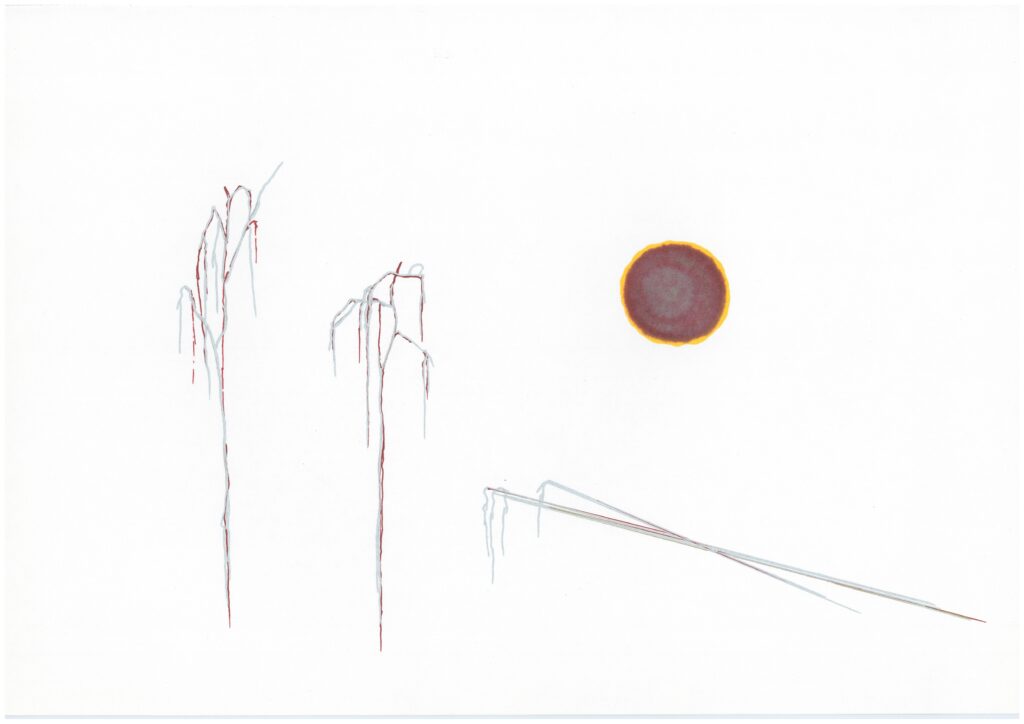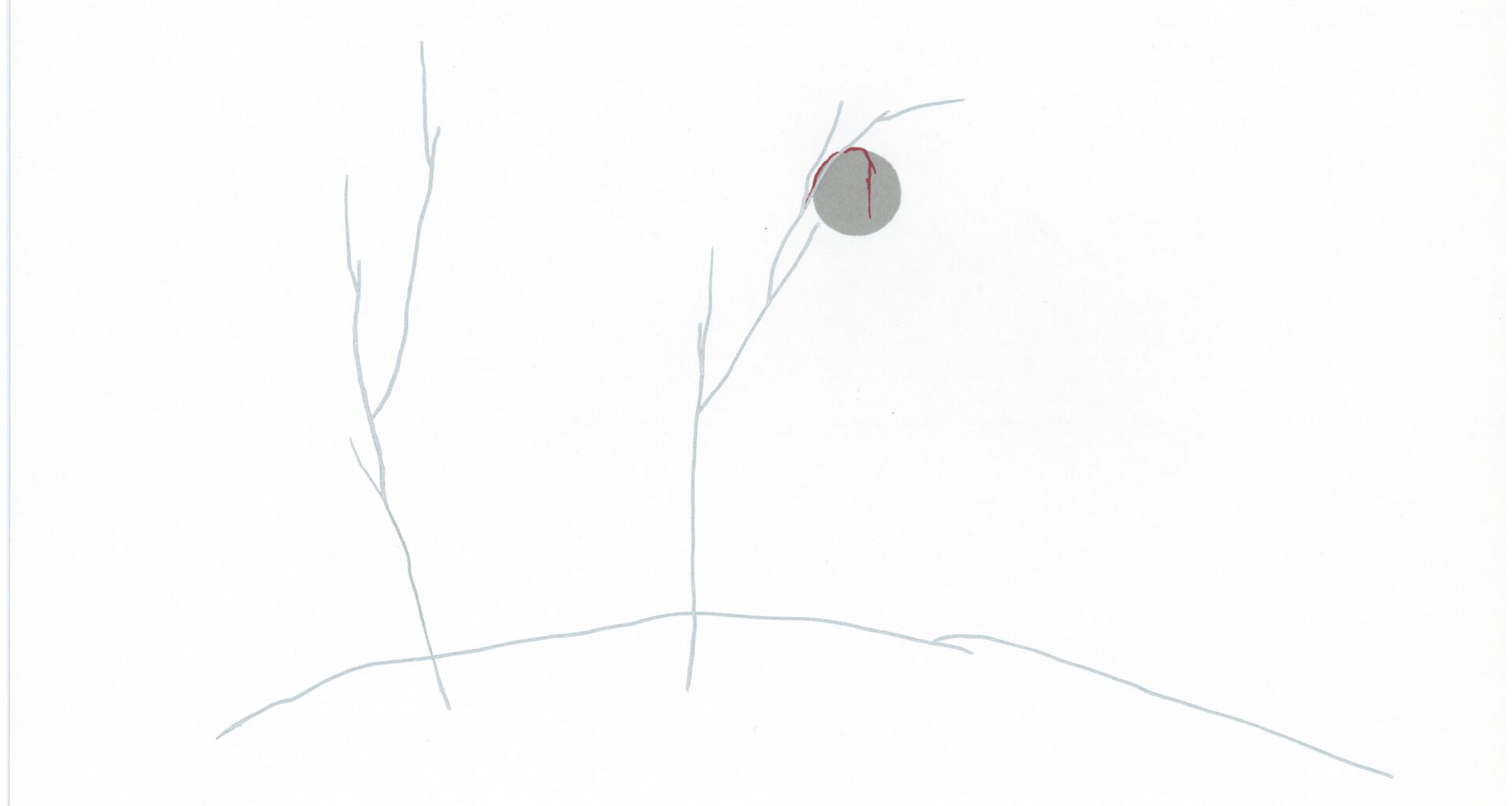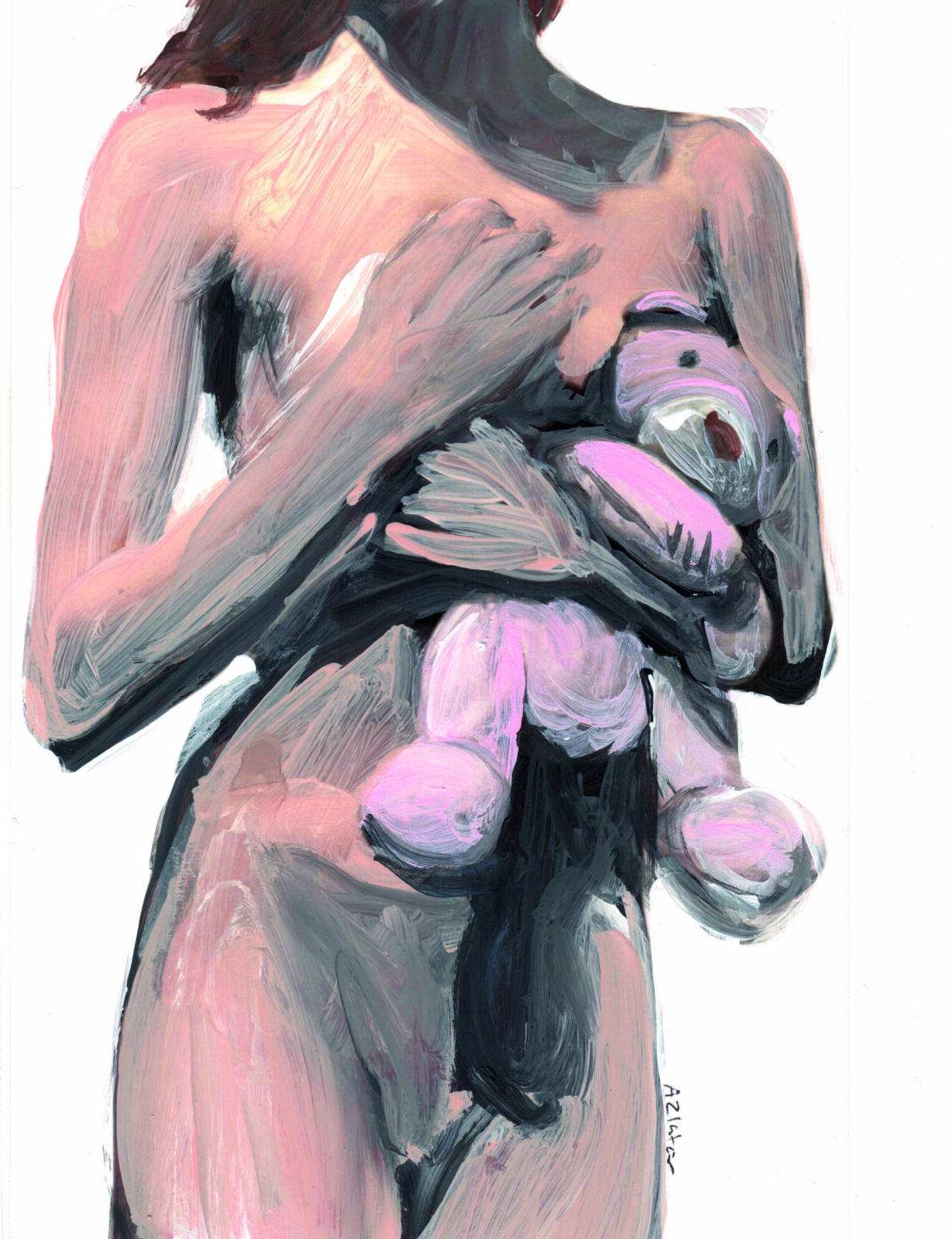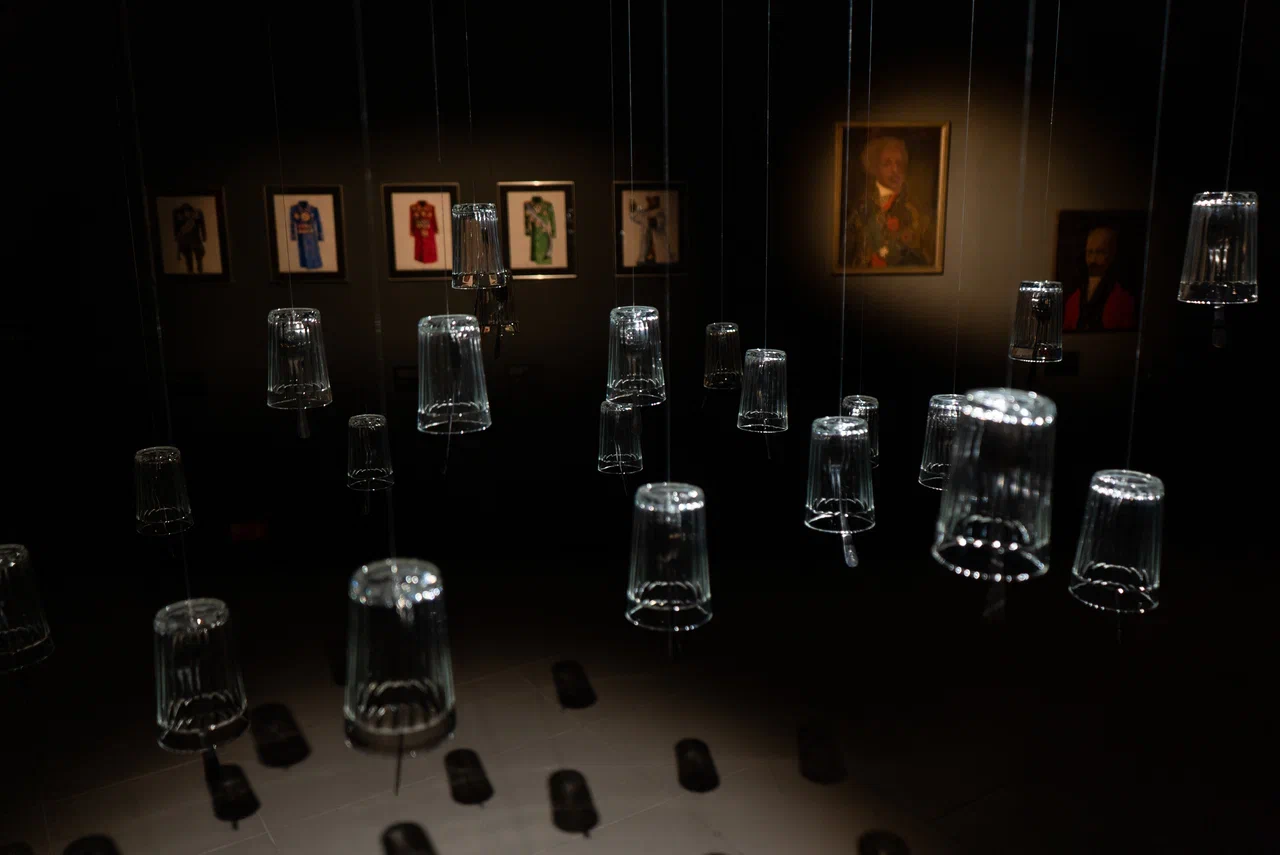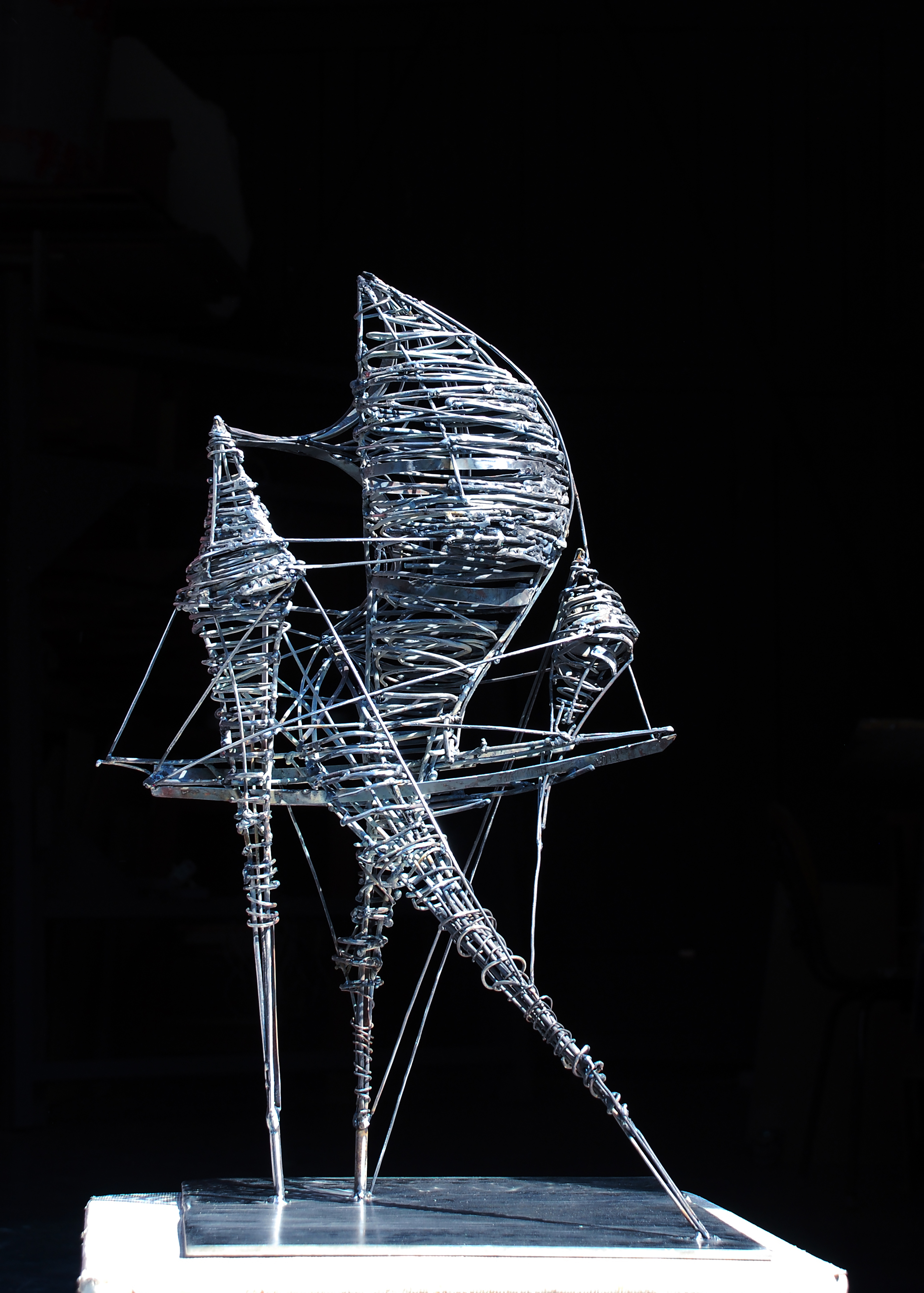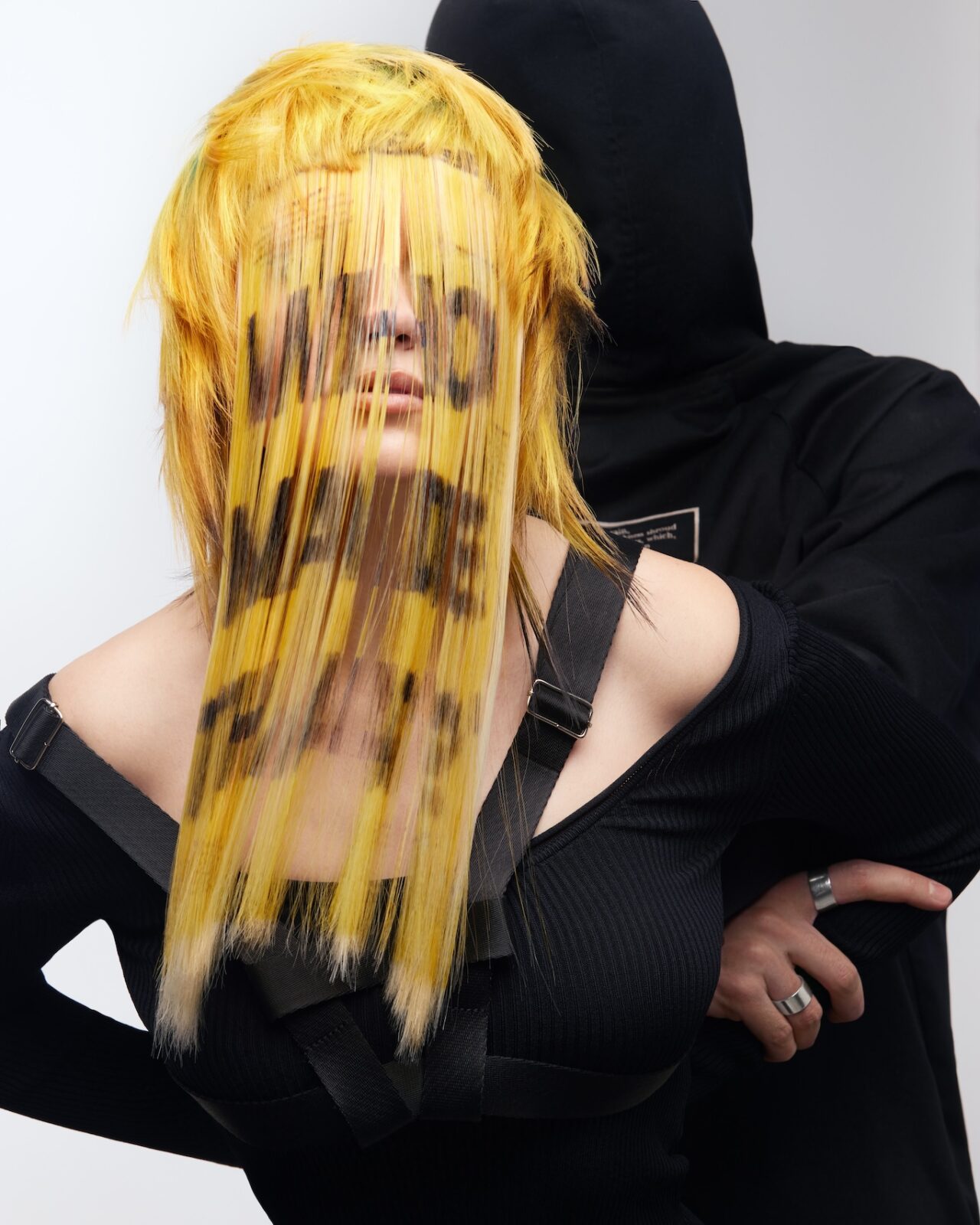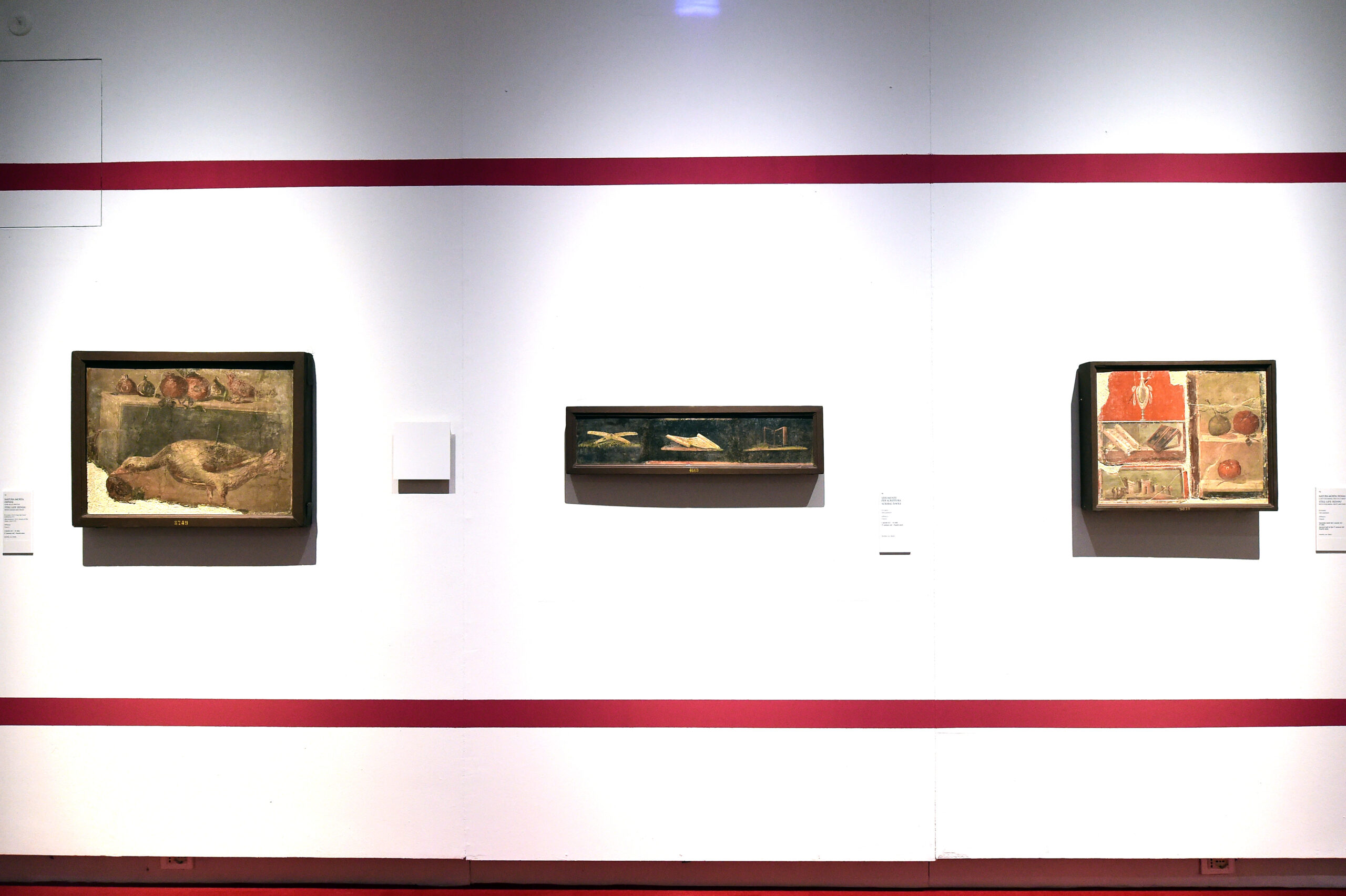Arik Miranda is an Israeli artist who exhibits his work all over the world. He shared how he draws inspiration from music and tries to minimize all expression in his graphics, focusing on feelings and emotions in their purest form.
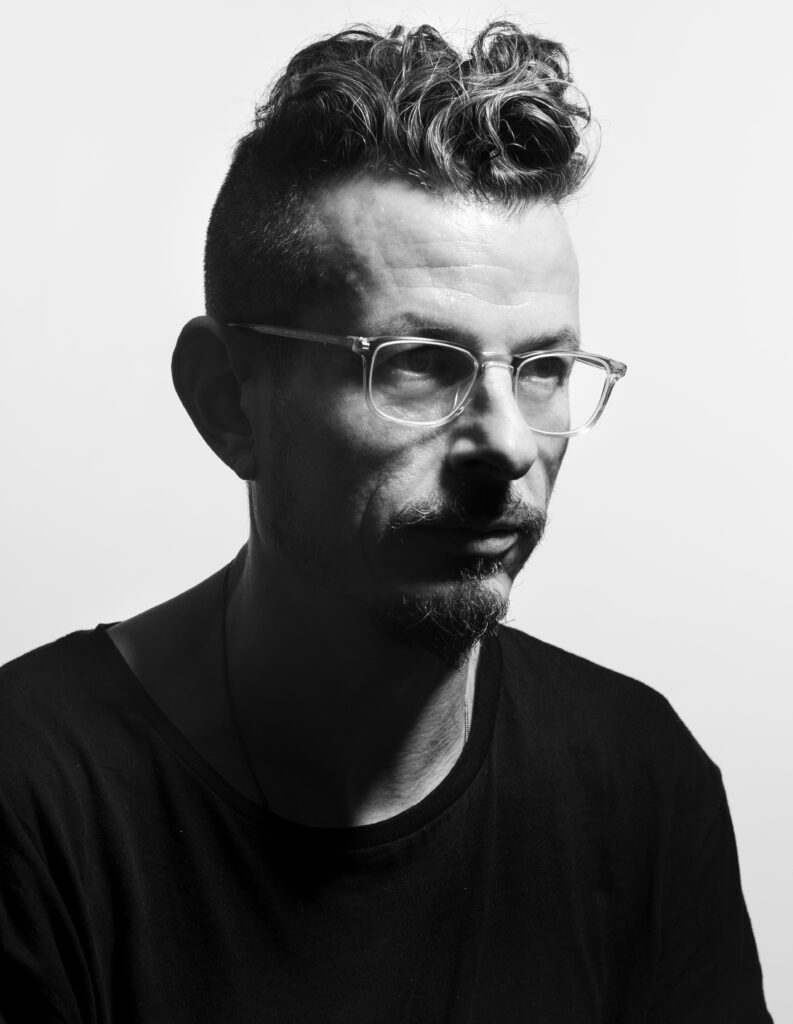
Interview: Anna Azens
What aspects of your life should your viewer know to better understand your works?
I think there are two main aspects – one of them is that my origin is extremely mixed. All of my family members are Jewish, yet they came to Israel from different countries. My mother’s father came from Syria, my mother’s mother came from Egypt, and my father’s side came from Greece, but originally they were from Portugal. So, in a way, I am both a Jewish and an international artist. This special circumstance again and again has me asking myself the same questions about my identity – the one that allows me to feel at home in any country in Europe or in the States and, at the same time, totally connected to my roots.
Lately, I’ve been thinking about this with relation to Marc Chagall, a famous international artist of Jewish descent. He wanted to belong in Paris, to belong to its international scene. But at the same time, he was always dealing with his innate identity, going back to his roots and traditional Jewish moral values in his work.
The other thing is that my childhood started in a regular city, where I was growing up surrounded by people with an average income, same as my own family. However, when I was 11, we moved to a new town, which was like Israeli Beverly Hills. Nothing had changed for my family economically though, so we continued to live in a regular apartment, only now I was living among extremely rich people. This experience had a huge influence on my upbringing.
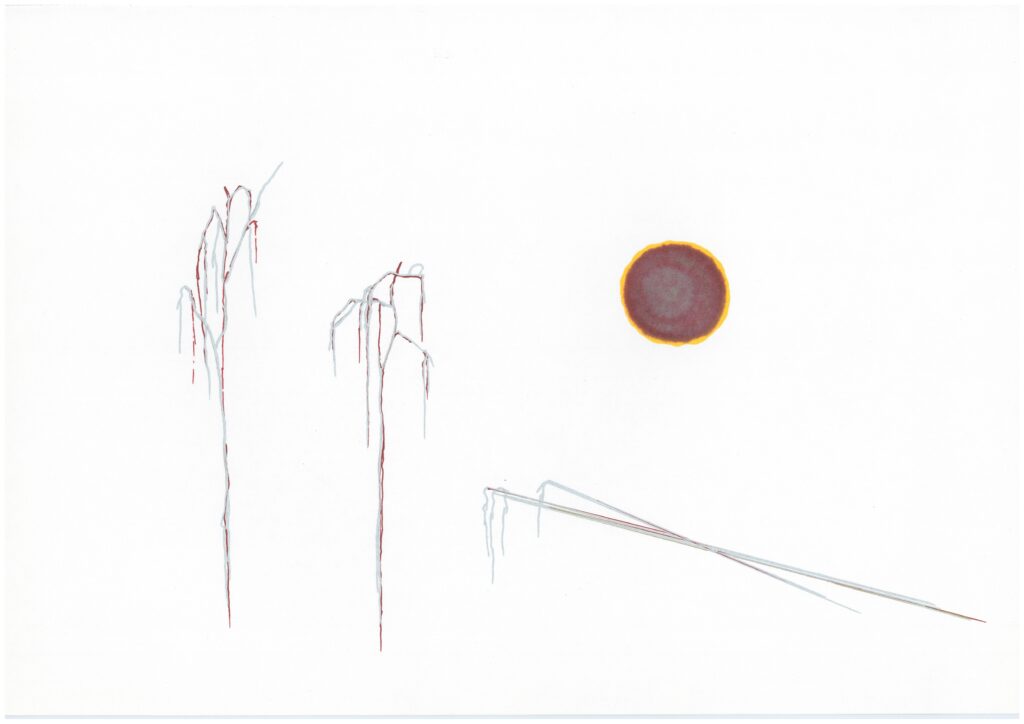
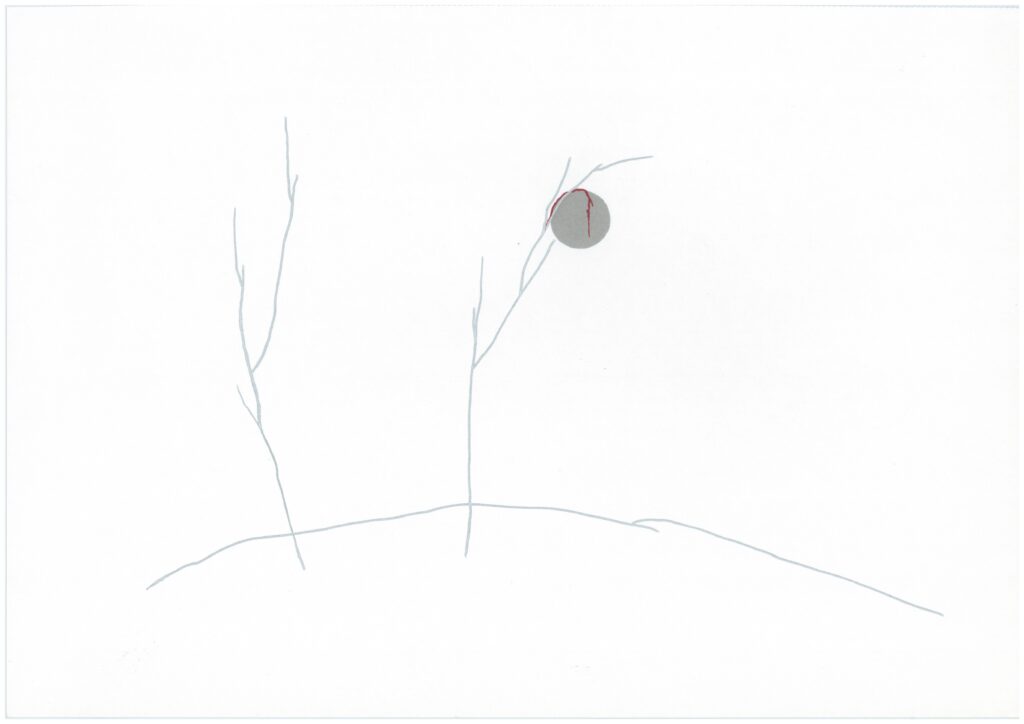
Have you always lived in Israel?
I grew up in Israel, but I also stayed in New York for two years and worked with galleries in Vienna, Milan and Zurich. In addition, I did residencies in places like Liechtenstein and New York and organized exhibitions in Tokyo. So, I’ve been traveling quite a lot since the age of 27.
You are famous for working with photography, but recently you’ve had a graphic art exhibition. Do you associate certain themes with certain techniques?
You could say that. I started my career rather abruptly: I’ve never been a child who painted or created things and started painting only at the age of 19. I’d say I’m more of a painter than a photographer, but I don’t really like to put people into boxes like “technique” or “area of practice”.
I’m mainly a painter and I mainly do works that can be described as graphics and drawings. And it is only lately that I’ve started to incorporate photography and video in my works. But even when I do this, I try to emphasize that everything is connected, so that my viewer would look at the all elements as a whole. I take photos, print them, and then work on them – adding drawings or changing colors.
I think art is like a musical career: you make up a band and prepare your first album, the second, the third – and then you have a collection. At the end of the day, your field of interest can be seen only through the lenses of your work.
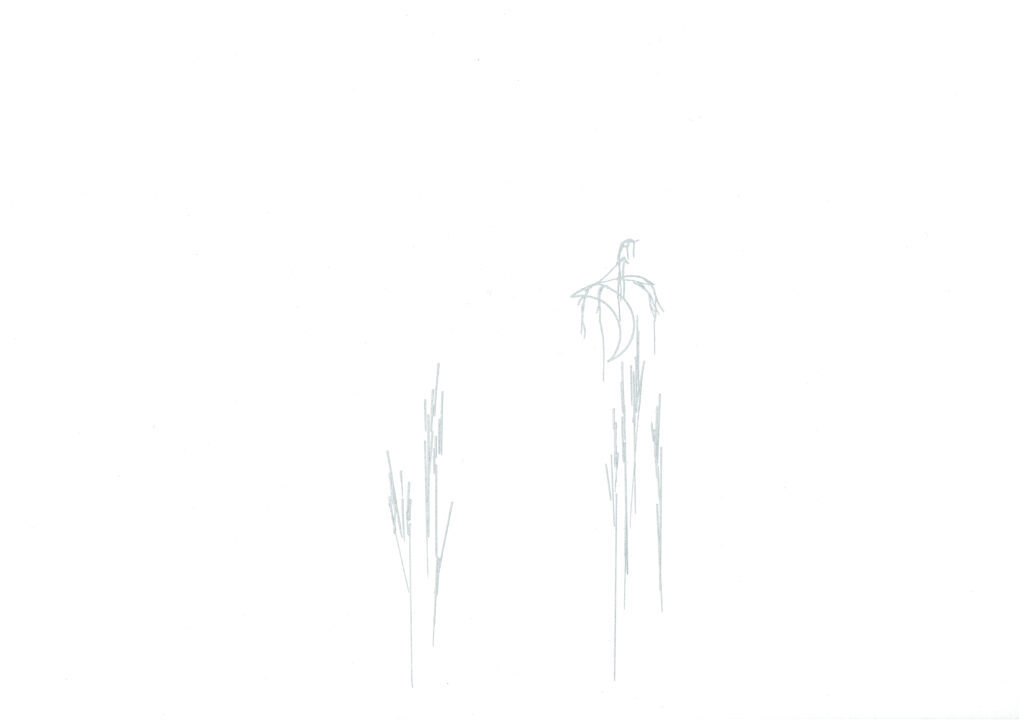
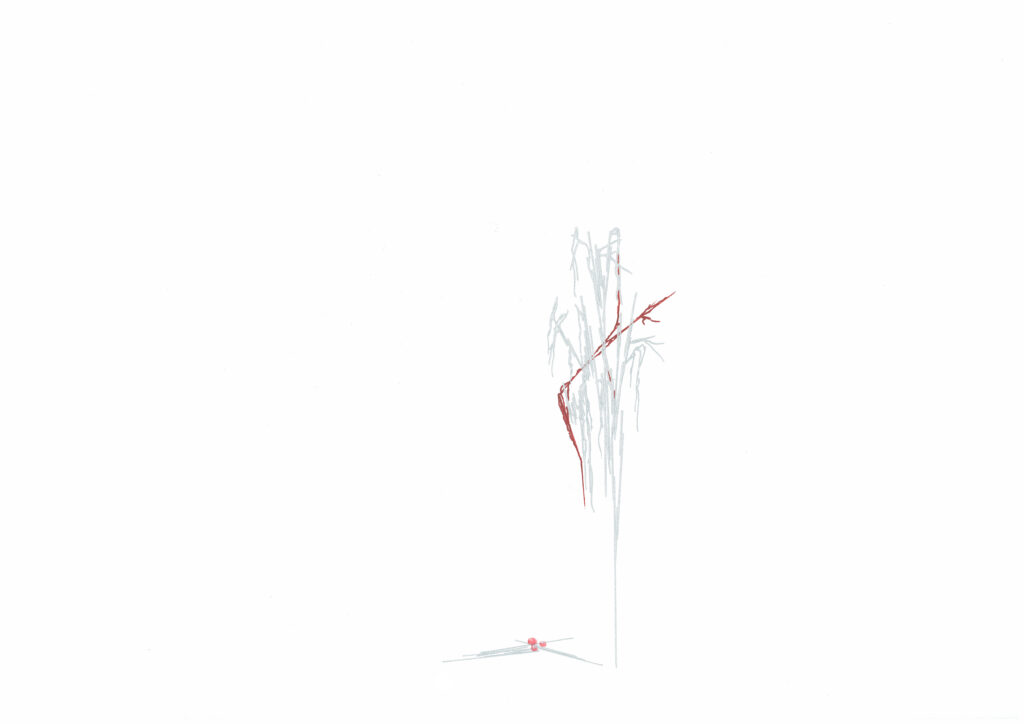
What projects do you consider to be of most importance in your career?
My first and latest exhibitions. Exactly 20 years ago, I was working on my first and most important exhibition as a young artist. It was a show for the Tel Aviv Artists’ Studios, a very important place in Tel Aviv. I had been working on that exhibition for around a year, but when there were 2 or 3 months left before the exhibition, two things happened.
First, I traveled around Europe, where I got exposed to many works, among them Chagall and Japanese artists like Hokusai. At that time, I started to think about the connection between Japanese and Jewish art. Art, as in what we call Judaical art, strongly relates to our traditions in its works, and even more so – to our faith and moral values. That’s where I could see similarities between these two art traditions. And having discovered that there is a connection between myself and artists like Hokusai and Chagall, I started to see my own identity in a different way.
Second is that when I returned to Israel, it was aflame with terror, things were horrible to the point of being ridiculous. And those geometrical abstract paintings that I had been preparing for the exhibition now seemed not so relevant anymore. I started drawing new paintings, very minimalistic and modest, even in their scale.
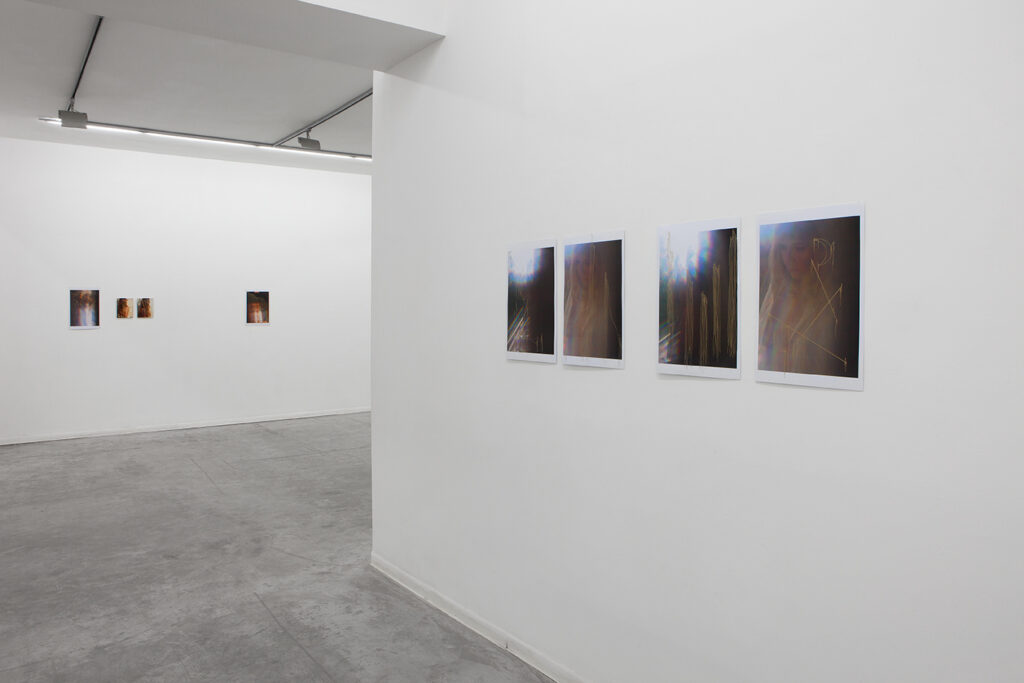
At the same time, these paintings could reflect my thoughts about the ongoing chaos and my reasoning on why we should create art at the time when people are dying. What is the relevance of art to people when everything seems like a question of life and death? In the end, I’ve changed all of my exhibition for the Tel Aviv Artists’ Studios to these new drawings. It was a huge risk and I’d never done something like that before. The space was huge, and the whole exhibition seemed extremely minimal.
Yet I couldn’t not follow my inner feelings. I think that was the moment when I found my own language. It made a huge difference in my career and really showed me what my signature style was. And indeed, that exhibition was very successful: many of those works found their places in private and museum collections in Israel and all over the world.
And now, during the present war, happening in Israel right at this moment, I’ve decided to show the works from that old exhibition (some that remained with me and some that I borrowed from private collections in Israel) – and to show them only for two days. My main purpose was to demonstrate how these works are still as relevant as they were 20 years ago, and to make people think what this fact could mean for us as a humanity. Showing this exhibition again eventually proved to be very important, at least for me – to think about my way again nowadays, when nothing is clear.
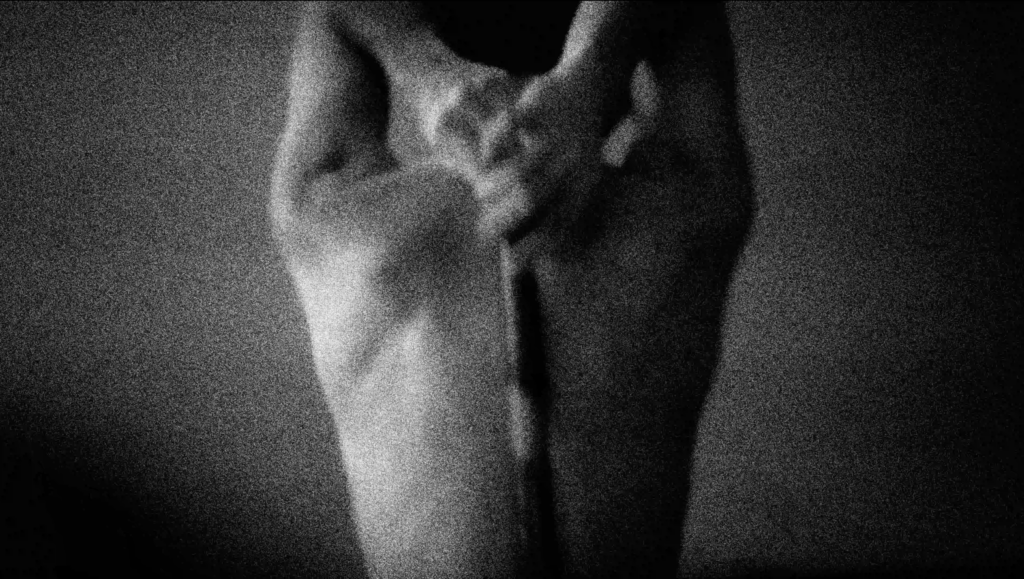
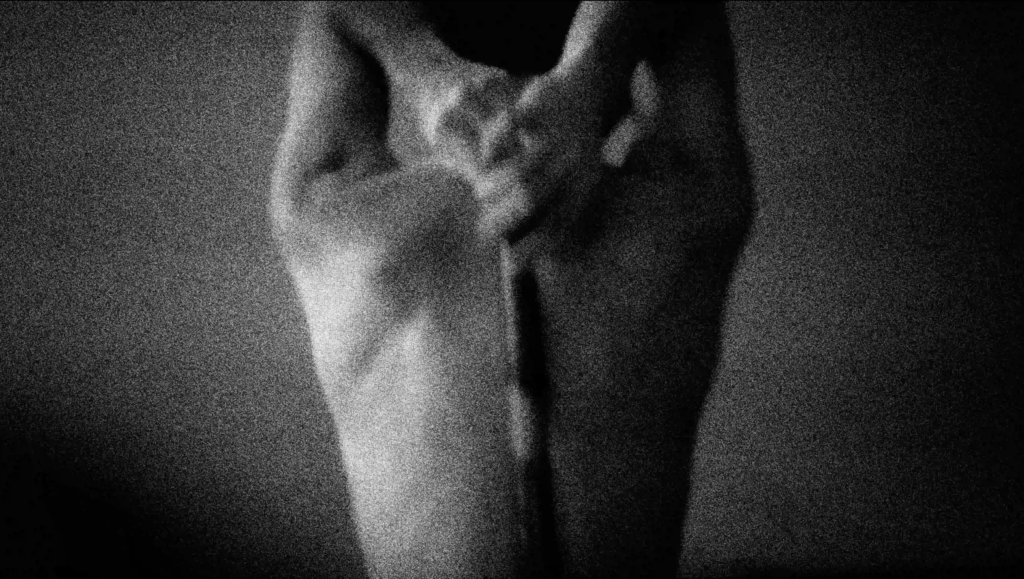
Speaking of your own language that formed in that exhibition: how would you define it?
I always try to think about the words, images or feelings important to me in a certain situation, and then to reduce them to a minimum. The first stage of creation can be difficult in itself: to define what is more or less important, and what should be called essential. After this, I start (not unlike Malevich) to reduce the “white noise”, until I come up with the most minimalistic expression possible. From this point of view, I really admire Japanese art because it always uses the most minimal gestures to capture the most intimate moments. In a way, it’s similar to writing good pop-music: it’s very hard to write a song under three minutes long that could touch millions of people’s hearts.
Your graphics seem to be consonant with the works of Alexander Calder, while your painting style seems to reference some antique, or perhaps oriental techniques, due to its precise use of color. Can you share some of your favorite artists or sources of inspiration?
Firstly, I absolutely adore Alexander Calder. I was exposed to a huge body of his work while traveling to Switzerland and Liechtenstein. I love the feeling of fragility beautifully captured in his work, as well as the always present dynamic nature.
Speaking about sources of my inspiration, I should start with Caravaggio, who in my eyes represents the real magic, that is the power of sensuality. For similar reasons I love Mark Rothko, Gilbert and George, they’ve always influenced me.
There is also an Israeli artist by the name of Moshe Castel, his works have a really special place in my heart. He collected stones from the mountains of Jerusalem, then grinded them and used this dust to create paintings that are more like bas-relieves, as you could really touch them. It’s a very profound and sensual art.
But truly, I’m most influenced by music. My favorite bands are The Pet Shop Boys, The Smiths and Saint Etienne. For me, they represent a type of music that is quite unique within the popular media – it’s music that gifts people the most amazing magic.
These musicians manage to create something so multilayered and so influential that it’s hard to believe. To me their music feels like love, like magic, like the source of everything – like something that can affect an individual’s life and grant warmth to so many people.
Caravaggio with his lovers painted under the skies, Mark Rothko, Gilbert and George, every name that I can mention – the way they did art is the way that these musicians play music. Also, it’s a real source of jealousy for me. If there was something I’d do if I weren’t an artist – I’d become a musician.
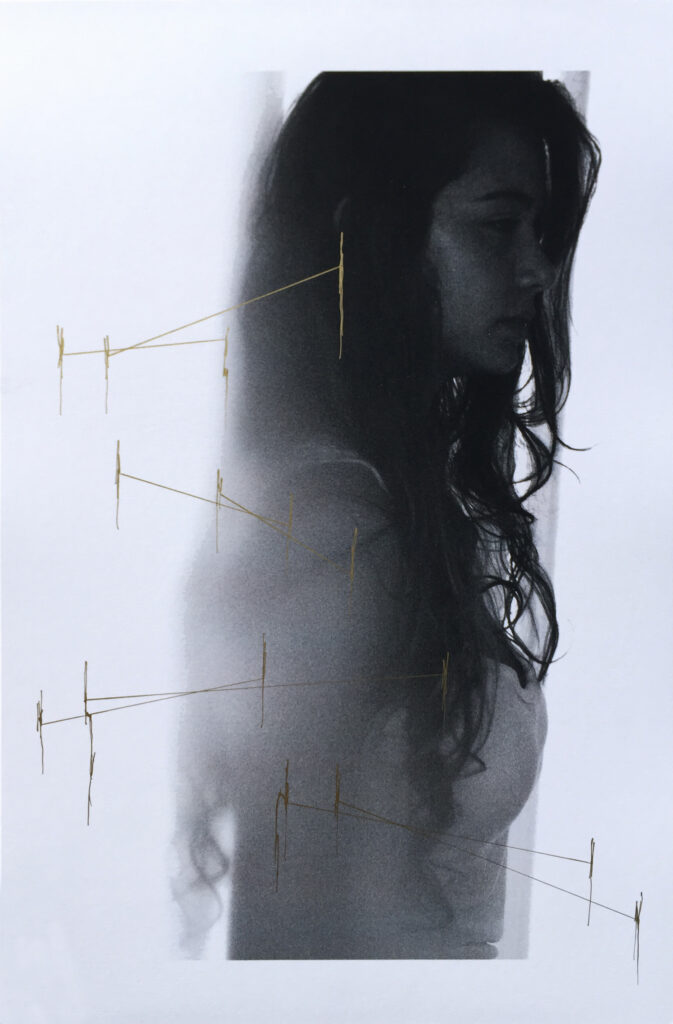
Do you play any instruments?
Unfortunately, no. And if I start singing at this age, the audience will probably shoot me down or throw tomatoes at me.
How do you see your art impacting your audience and society at large?
The only thing that I want to do with my art is to give my viewers a moment of comfort, a moment of warmth and relief. And that’s it. You cannot really ask for more.
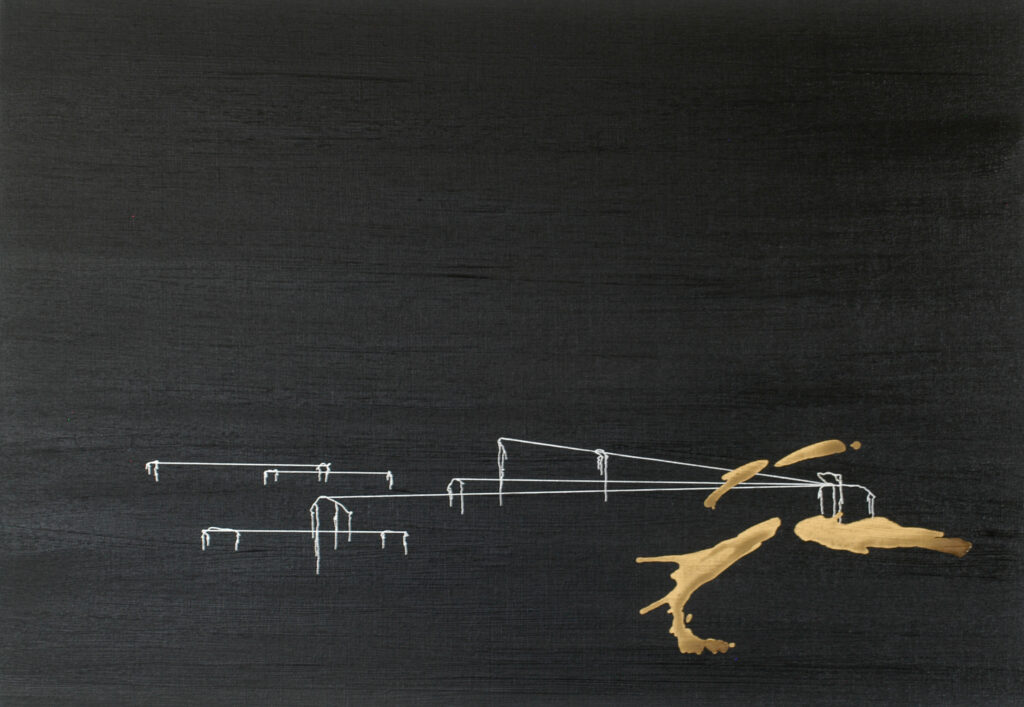
You’ve been to many residencies, built a great career and still continue to grow. Do you have any advice or inspirational words to pass to the younger artists?
I’ve been teaching art for almost 20 years now, so I’ve had the privilege to see this field from both sides. One of the things that I’ll never forget is the years after graduating from the academy: when you think that somebody is waiting for you, and in reality nobody does. During your studies, you might look at your more successful classmates with envy, but this is a huge mistake, because in trying to catch up to someone else, you often lose track of why you came to the art sphere in the first place. Never forget that you are unique.
There are fairy-tales where a princess or a prince lives as a frog until they find the right person. So don’t be afraid to be unique, even if some people might see you as more like a frog – eventually you’ll find the people that will be touched by your art. Be sure of yourself and be true to yourself. Don’t look at people with artificial success, because it fades away after a couple of years. Everybody knew who worked with Caravaggio back then, but now there are only a few names mentioned along with Caravaggio’s. The history sorts everything out.
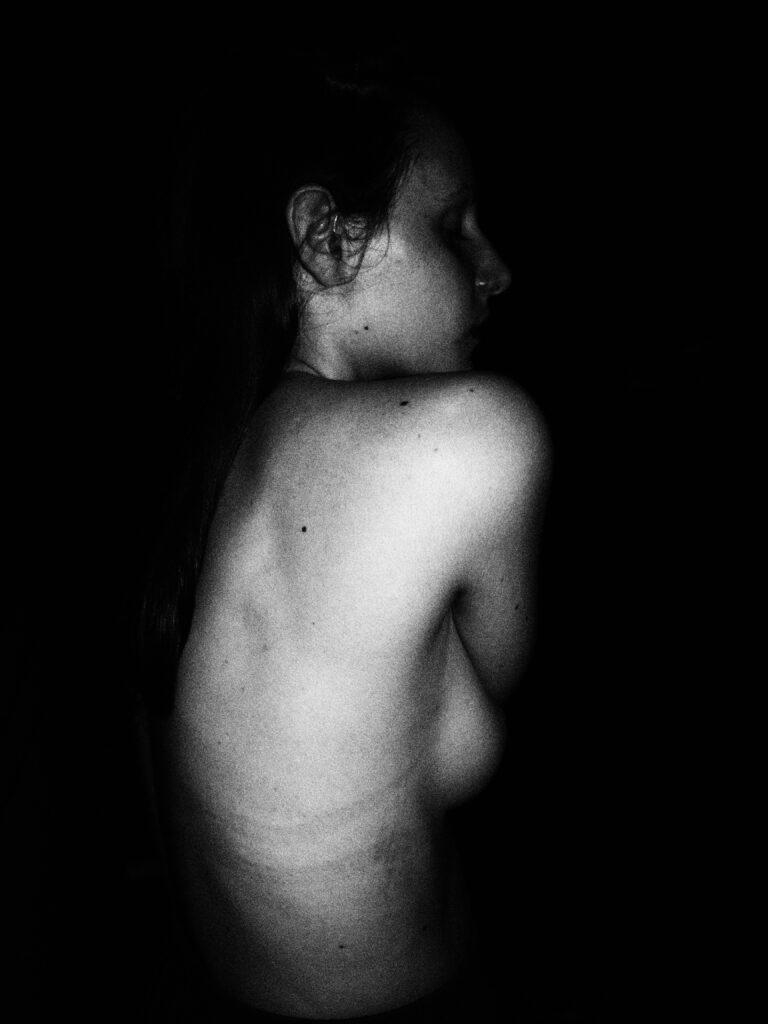
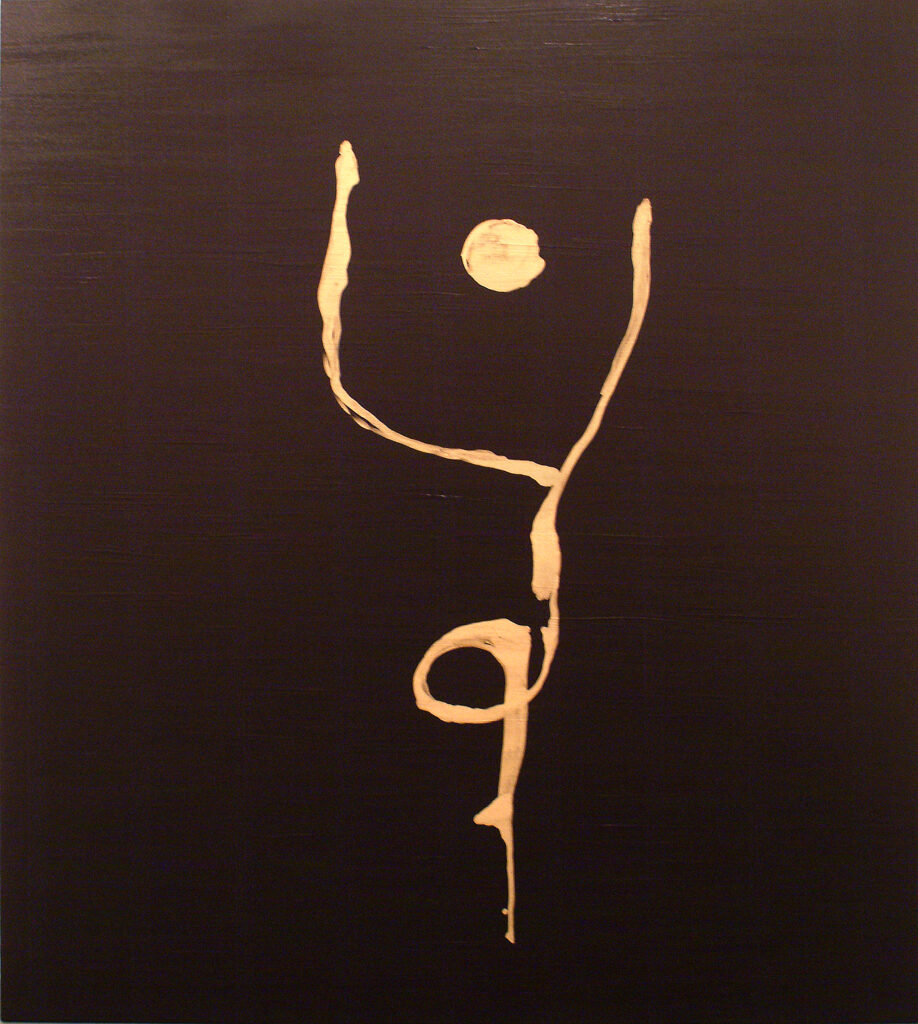
What are you working on at the moment?
Right now I’m working on a body of works, comprised of videos and films that I’m producing online with different people from all over the world. The project is called “In Other Rooms”, and there is a crazy amount of material already. Something like 50 films, shot with people from at least 15 different countries. I showed the first part of this project in a museum two years ago. And now I’m working on the new chapter of this project.
Were people involved in this project chosen randomly or based on some criteria?
They are all chosen based on one principle: I just look at a person and see if there is any depth in their eyes. Often we can see if somebody had to deal with difficult things in their lives, even if the person is in their 20-s. All you have to do is to look deep into their eyes and see if there is something complex in there. Souls that had to face hardships in the past always reflect it in their eyes.
